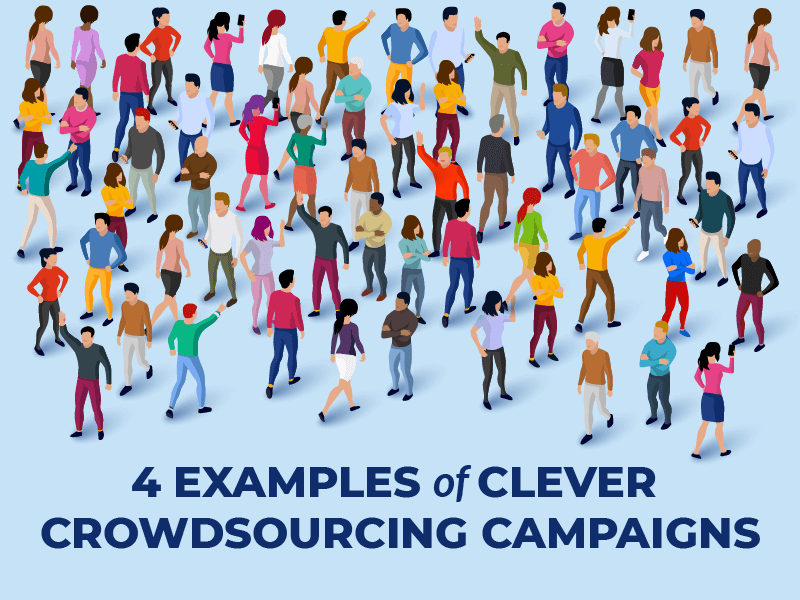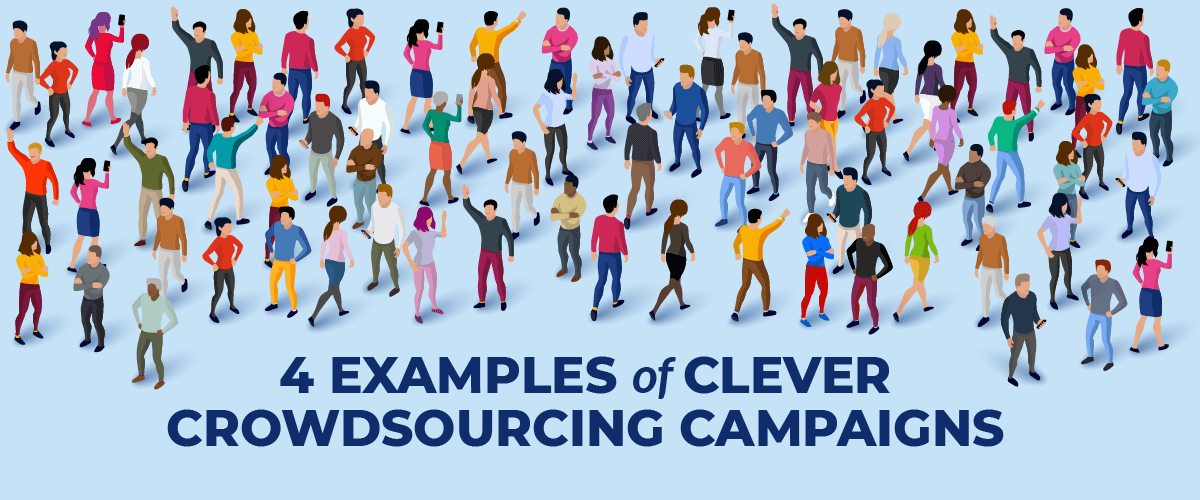Business owners, designers, marketers, and the like are always trying their best to understand the inner workings of their audience—likes and dislikes, wants and needs. Always assuming that if they like this product, they’ll like the next and predicting that the next big thing you have planned will be exactly what your customers are searching for.
But the only way to ever really know your audience’s true preferences is by getting them involved in the process.
Enter: crowdsourcing.
What is Crowdsourcing?
The term “crowdsourcing” was originally coined in 2006 by Wired writer Jeff Howe. He defined it as the act of taking a job traditionally performed by a designated agent (usually an employee) and outsourcing it to an undefined, generally large group of people.
In other words, businesses tap into the “power of the crowd” for ideas, information and creation, rather than carrying out tasks themselves.
Not only can businesses use it as a way to better understand their audience and achieve more successful product and service launches, but these interactive campaigns can provide them with a ton of great fan-made content and materials to use in their marketing strategy.
Crowdsourcing is frequently found in conversation alongside its partner in crime—crowdfunding. Often used interchangeably, these terms do have different meanings.
While crowdsourcing represents the specific tool or talent you need to accomplish a task, crowdfunding is the capital required to accomplish that task. Think of crowdfunding sites like Kickstarter and Indiegogo—these are places where people can share their ideas with potential donors and raise money to bring those ideas to life.
Crowdsourcing is where the actual project gets done.
How Brands Are Getting Involved
Companies have caught on to the attention surrounding crowdsourcing and have sought out innovative ways to get their valued customers involved in production and promotion processes.
Crowdsourcing brings people together online, so there aren’t any geographical constraints that get in the way. This allows brands access to untapped talent that might not be located in their area. Crowdsourcing generally occurs through social media, so businesses can gain insight into what consumers are talking about, interested in, and where their talents lie.
From asking followers their preference on a design or color scheme, all the way to submitting their own content, companies large and small have realized the benefits of using their most valuable asset (their customers) to test new ideas.
Asking what people like before putting something on the market helps reduce the risk of a product or service falling flat, while also generating hype around a new offering.
As consumers, we like to know that a company is listening. It’s important to know that our voices are heard when we have ideas or feedback to share—especially when it involves spending our hard-earned money. Asking for our input helps create a personal connection, which in turn leads to greater brand loyalty.
Over the years, brands have found new and interesting ways to get their audiences involved through crowdsourcing. From the most beloved campaigns that swept the world to the more recent ventures on social media, here are some of the best crowdsourcing examples to inspire your marketing strategy.
Doritos
Doritos is arguably one of the first—and still one of the best—companies to take advantage of crowdsourcing for an advertising initiative.
It started with Crash the Super Bowl, a legendary campaign that lasted a decade and never lost the interest of its fans.
From 2006 to 2016, Doritos held an annual contest for fans to create their own ads to fill one of their 30-second Super Bowl spots. Over the years, the company has given out millions in prize money, while also serving as a platform for creatives to get their name out there in the advertising and video production communities. These ads have become iconic for the brand, positioning them as a comedic mainstay among the most reputable Super Bowl advertisers.
They even came back in 2020 with the Crash from Home contest to commemorate the return of NFL Kickoff Weekend. Just like Crash the Super Bowl, fans were able to submit TV commercials for a chance to win $150,000 and all winning ads were aired during the Week 1 games.
But what started as an initiative to have a fan-produced Super Bowl commercial turned into something much bigger in Dorito’s long-term content strategy…
Legion of Creators
With the Crash the Super Bowl legacy having produced such winning content for the Doritos brand, as well as career opportunities for creators and aspiring filmmakers, top executives decided there was more they could be doing.
“From Crash to Cash,” the brand launched the Legion of the Bold campaign which turned into the wildly popular program: Legion of Creators. This new program threw out the notion that creative opportunities for fans should be limited to one Doritos ad during the Super Bowl.
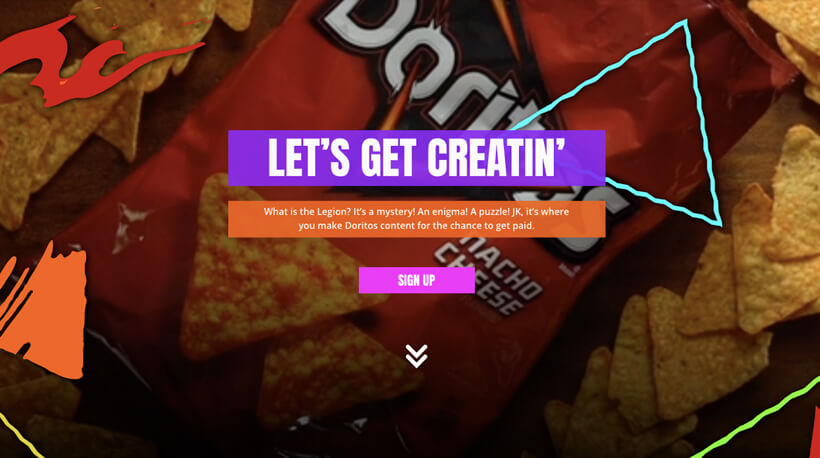
So now, creators can make content all year long for a chance to win some cash and share their talent. From 30-second commercials to banner ads for the brand, the Legion of Creators offers a ton of challenges to empower fans to create.
It’s a spectacular strategy: fans feel involved with the chance to win money, and Doritos gets an endless stream of innovative and genuine consumer-generated content to utilize across every channel.
Doritos has aired such memorable commercials over the years that it’s hard to believe that most were created by seemingly average consumers! Giving marketers and creators the opportunity to show off their skills not only sheds light on the amount of undiscovered talent out there, but it makes Doritos a more approachable, relatable brand.
Waze
Forget one crowdsourced marketing campaign—Waze is fueled by crowdsourcing everyday!
The app was established over 10 years ago to help drivers get from point A to point B with less frustration and better navigation. Through a community of 140+ million users, map editors, beta testers, and partners, Waze utilizes crowdsourced data to provide people with everything they need to know in order to have a safe drive to their destination.
Even on their website they state, “In 2009, we created a crowd-sourced navigation app that would make it easier to circumvent literal and figurative bumps in the road. How? By working together.” Waze knows that their success is entirely due to the contributions and support of users around the world.
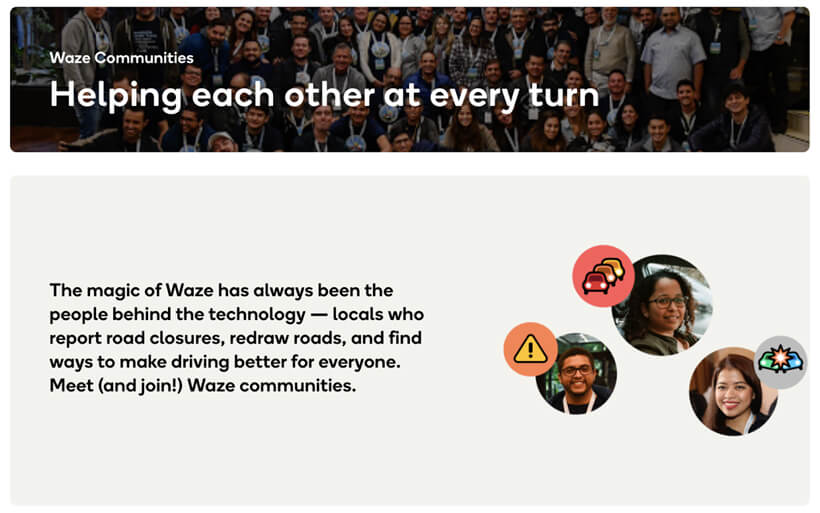
There are three main ways in which Waze crowdsources data:
- Users report live events in real-time
- The app passively collects and shares speed limit and traffic data when open in the background
- A large network of volunteers consistently edits the local roads and maps for their area
It’s a brilliant collaborative effort: report accidents, bad traffic jams, or insane potholes and the app will use that information to help local drivers in real-time avoid even one bump in the road.
Of course, for the more serious volunteer roles like map editors, Waze ensures there are great incentives in place. From top editor meetups to structuring the community by different tiers, these simple rewards allow Waze to continue growing and updating its database strictly through its users.
99designs
99designs was looking for a change—they realized that their audience was maturing so they needed to follow suit with the look and feel of their brand.
So the platform that literally uses crowdsourcing to create the perfect designs for other companies, decided to turn to their own community. They invited 99design creators to compete in a contest to craft a new logo for the brand.
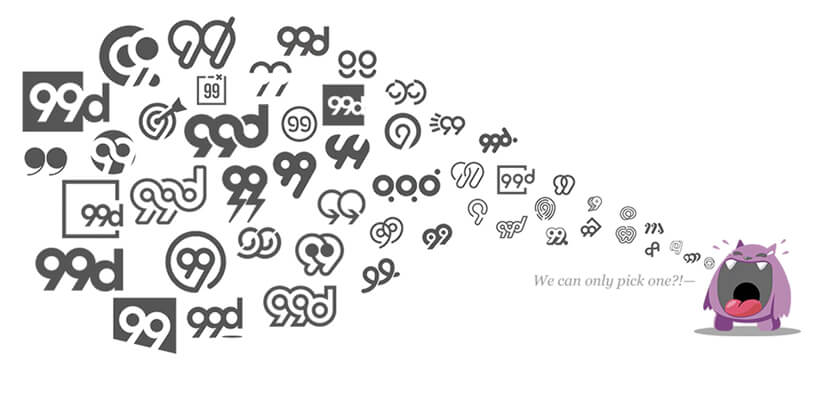
After two years, 4,000 entries and 556 designers, the brand found its new look!
Obviously the campaign was a success—in more ways than one.
Not only did 99designs get an awesome new logo, the brand was able to show what their talented creators could do and promote the effectiveness of their logo design contests.
A huge promotion for their brand and services, all made possible by their very own designers. Plus, the winner and finalists all received prizes for their efforts in the competition along with recognition in the 99designs global community.
Madewell
Madewell is a brand focused on 1. making great jeans and 2. making all things that go with great jeans. But in 2020, Madewell realized that its audience was looking for comfy and cozy over, well… denim.
How could they tell? Well, their most loyal shoppers told them!
Madewell turned to its super-shoppers in the Madewell Group Chat—a customer panel of 4,400 individuals—and asked what they wanted to see from the brand.
After polling their trusted community, they found that 81% chose loungewear over denim—a result that this denim company would have never guessed.
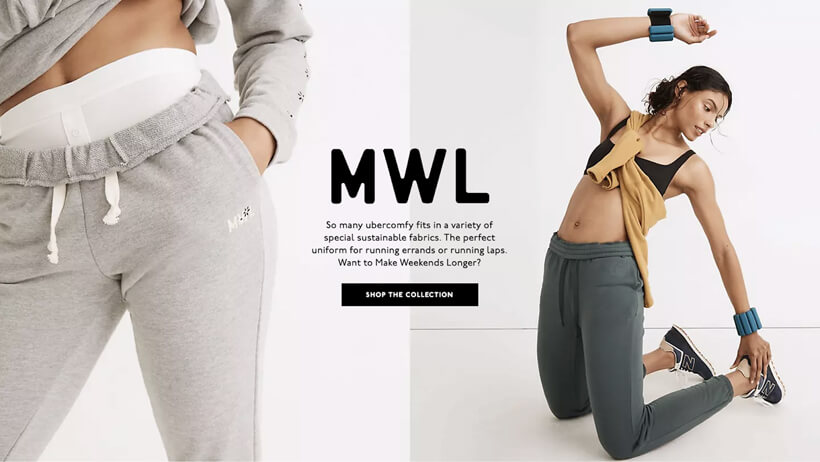
So MWL, aka Make Weekends Longer was born, Madewell’s very own loungewear collection. The campaign was a huge success, leading the brand to create exactly what their customers were looking for. Now, Madewell’s “athleisure” collection has become some of shoppers favorite items from the brand.
While you may not have a friendly group chat established with 4,000+ of your most loyal customers, there are plenty of ways to learn more about what your customers are searching for from your brand—the most relevant (and accessible) being social media.
There are now countless social media features available to businesses, making it easier than ever to engage with your followers and easily receive feedback. Instagram Stories, for example, have been a vital tool used by bigger clothing brands to narrow down what their customers want next and what current styles may not be working for them.
Check out Aerie on Instagram—their Style & Trend Stories Highlight will serve as the perfect inspiration to start asking your own audience what they think directly.
Honorable Mentions
There are some other notable brands utilizing crowdsourcing in their marketing strategy that we wanted to make sure we at least mentioned before signing off here.
Starbucks
Starbucks is crowdsourcing in a different way. Theirs isn’t as much of a one-off campaign as it is an open seat at the table for fans to express their own ideas for the brand. And no, this isn’t an avenue to discuss customer service issues. For a decade, Starbucks actually offered a separate website called “My Starbucks Idea,” where customers could submit their ideas of course.
It’s no surprise that Starbucks created this page after seeing the creativity from customers in their well-known White Cup Contest back in 2014; a phenomenal campaign that will live forever in the crowdsourcing history books.
The platform has since been retired, but Starbucks encourages its audience to use their socials to reach out with their ideas!
LEGO
Another brand that has created a very successful platform for ideas is LEGO. On the LEGO ideas website, it prompts you to become a LEGO designer yourself, offering contests to win prizes and an opportunity to share your creativity.
Both brands are utilizing crowdsourcing in their long-term strategy and it’s working out great. To be able to give such diverse audiences an opportunity to participate is crowdsourcing at its best.
Harness the Power of Crowdsourcing
While some companies are still figuring out how to utilize crowdsourcing effectively, many others have already taken advantage of this tactic. If you’re looking for ways to connect with your customers on a more personal level, get their feedback on an idea, or give them the opportunity to show their creative side, crowdsourcing might be an effective strategy for your brand.
And you don’t have to be a huge international company to get involved. Simply taking the time to survey customers on a new product or service, hold a contest, or get feedback from thought leaders in your industry are all effective and inexpensive ways to help you make well-informed decisions for your business.
These are only a few awesome examples of brands that have put the power of the crowd to work for them; do you have any other favorites? Leave them in the comments!
Editor’s Note: This post was originally published on August 22, 2012 and has been updated to provide you with today’s most relevant examples.

